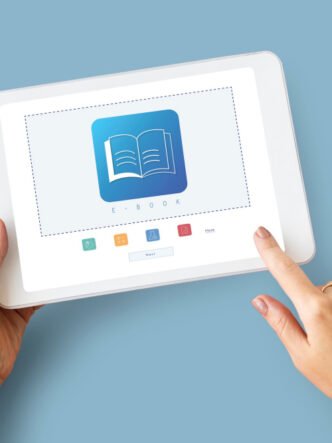As an e-learning provider, you need to build a centralized, searchable video resource library. An e-learning video resource library ensures learners have quick access to all the information they need. This can reduce learner frustration and improve their online learning experience.
A video library centralizes all your video assets in one location. Learners don’t have to hunt all over to find them. They can quickly locate the videos they need when they need them. This saves time and allows them to practically apply the knowledge as they gain it. Immediate practical application reinforces what they learn. Without a dynamic and inclusive content library, you lose out on the opportunity to expand the learning experience for your learners and improve your ROI.

What to include in a helpful video resource library
You must include videos that are most relevant to the needs of your audience and that meet your learning objectives. Too many videos cause overwhelm, especially if they aren’t organized well. Too few and learners could get bored. You need to include a variety of content formats and support for different learning styles. For example, after live streaming a lecture, you could save it to your video library so learners who couldn’t attend can access it later as video on demand (VOD).
Help and learner support videos
An online course help center can contain all the resources, guidance and assistance learners need to navigate your online courses. It may include troubleshooting guides and video FAQs that answer questions. You could include tutorials and guides that walk learners through your video library and how to use it. It could also include technical support and communication channels so learners can interact with support staff or instructors.
Training videos
In the context of corporate training, an e-learning video resource library can contain all the resources to make training effective in one central place. These videos can address specific job roles and career paths. They can fill specific skills gaps. Employees can access these videos at times that suit them and learn at their own pace.
If your business has a training video library, you will need to control access to certain content, such as internal training and corporate communication videos. You need to use a video hosting platform with access controls and privacy settings. This ensures only those who have specific permissions can access files and perform actions. You can make Town Hall recordings available to all employees and keep internal project video folders limited to specific groups.
On-demand content in a training library can include compliance videos, safety videos, tutorials, and much more. It can include a whole onboarding journey that prepares new recruits for the first day on the job. Sales training material can include everything from product demos to videos with objection-handling scenarios.
If you have a global audience with employees from different backgrounds and cultures, you need to localize videos for e-learners. For example, videos with captions and transcripts help them to understand content.

Best practices for organizing, tagging, and formatting videos
In a physical library, the books are arranged in a way that makes them easy to find. The same applies to a video library. As you start creating more video content, it can be a challenge to organize it in the best way possible. The way you organize videos should make sense to learners so they can easily navigate and access them.
Use folders, tags, and keywords
Organize similar videos in your library into folders. Use descriptive, accurate tags to indicate video content. Some video libraries automatically place tags and keywords when you upload a video. Ultimately, you need to use a system that works for your learners.
Use smart search capabilities
Smart search capabilities ensure that learners can easily find relevant videos. Video chaptering allows them to go to specific chapters in videos.
Provide annotations
Annotations for each video can provide learners with insights and encourage them to explore further. An annotation can explain what the video contains, why it’s important, and how it relates to learning objectives. It can tell learners what to do or look for while watching.
Integrate video resources with other e-learning content and activities
You can embed videos in blog posts and use them as examples or sources. Create tasks or discussions that require learners to use video resources. Connect resources using hyperlinks, buttons, or menus. Give instructions on how learners can move from one resource to another.
Cross-reference materials by linking to relevant multimedia content. You can even integrate social media feeds within your library platform. You need to create a dynamic learning experience as this improves understanding and retention.
Enhance and customize videos
A video library is not just a place to store videos. It can become an engagement hub. You can add various interactive elements to videos, such as quizzes, polls, or gaming elements. Multimedia elements like images, audio, and video offer variety. You can also give learners choices in their learning paths, such as allowing them to select the resources they want to use according to their format or interests. With the use of AI and machine learning, you can discover learner needs and preferences. This allows you to recommend specific videos to them.
Regularly evaluate and update videos
Regularly evaluating and updating your videos ensures that they stay relevant. You can use metrics such as views and downloads to see what videos appeal to learners most. You can also give learners opportunities to offer feedback on videos. You can use video messaging to communicate with them and get their input. This gives you valuable input on how to improve your videos.
Back up your videos
You don’t want to lose any of the videos you spend time creating. You need a system that automatically backs up your videos to cloud storage or a video management system.
On the Cincopa platform, you can build a branded video support library complete with categories, searchability, and transcripts. It also offers advanced analytics so you can gain insights into which content supports your learners the most.
How to deliver these videos through your LMS, site, and emails
There are many ways to deliver videos. You can post them on social media and in your newsletters. You can include them in your blog posts or on landing pages on your website.
- Regarded as the best video platform, Cincopa integrates with your learning management system (LMS). This makes it easy to manage and deliver video content.
- Your HR department can create a dedicated section in the library for promotional videos and teasers. When recruiting, they can direct prospective learners to these videos.
- In the onboarding process, video resources can simplify the stress of welcoming new employees. You can direct them to relevant video resources that help them get up to speed with company policies and procedures.
- Your sales team can embed compelling videos from the library into prospect emails.
- When learners can share and collaborate in discussion groups, it not only helps with peer-to-peer learning but can also lead to wider sharing of your video assets.
Conclusion: A resource library as a long-term support and retention tool
The best e-learning video resource library will be able to provide content “just as needed.” When learners have to dig through too many disorganized videos, they may select ones that don’t apply to them and quickly lose interest. Organize your video library in a way that pairs learners with tasks or situations they face on a daily basis. Go to the Cincopa home page and sign up for a free trial so you can see how well it works when creating a video resource library to support learner success.









